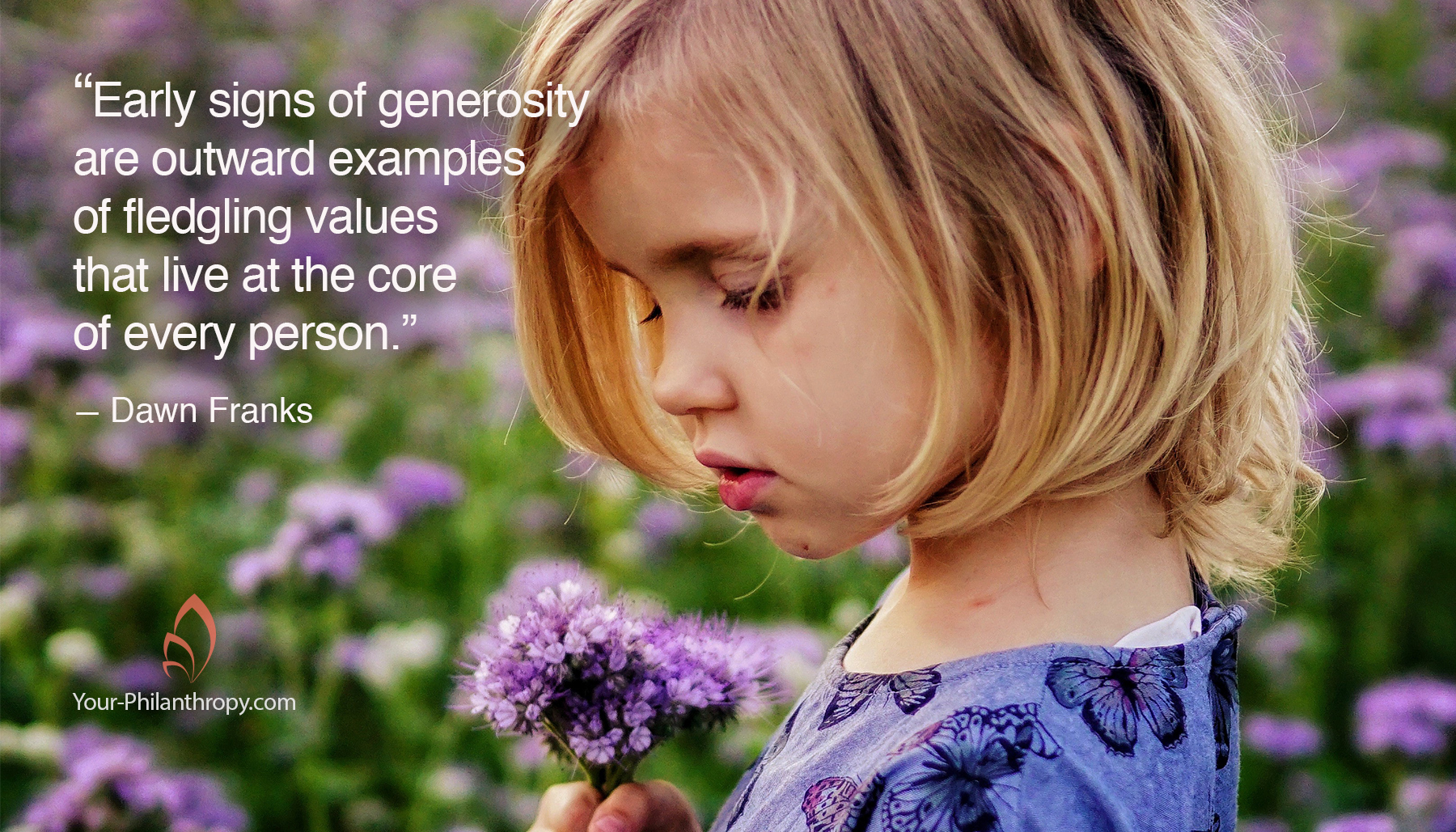Right now, our attention is on the small acts that reduce our chances of catching any kind of crud going around. It could be a cold, flu, or today’s new bug, the coronavirus.
But I have a surprise, some things are worth catching. And when it’s right and it goes viral, it can spread like wildfire, changing lives everywhere. No social distancing required. In fact, you’ll want to surround yourself with it. Heartfelt generosity is contagious.
I’ve written on more than one occasion about the angst I often hear from mothers about whether their children are learning to be generous. Observation, stories, and research tell us children are practically born generous.
The three-year-old child who presents the first bloom of flowers to a mother, even as it drops its tiny weed seeds every step of the way. The four-year-old child who wants to help wrap the gift for a grandparent, or primary school-age child who wants to raise money to help a sick friend get cancer treatments. All are beautiful examples of child-like generosity.
Over the years, as the “me” stage grows from “it’s my toy” to “it’s all about me” in the middle of the teenage storm, parents fear child-like generosity has died forever.
I have great news.
Generosity grows on values. The bad news is that values are hard to teach.
Early signs of generosity are outward examples of fledgling values that live at the core of every person.
Generosity grows on the bed of those values. When you understand the difference between what’s taught and what’s caught, you will witness more examples of your child’s generosity.
That’s right – values are caught, not taught.
To make this more complex, values are different from beliefs and preferences. Being spiritual and fostering deep connections with God are value-based, while the choice of being a Christian, practicing Judaism, or some other form of religion are decisions.
Many of us are born into religious practices, leading us to believe that whether we go to a Baptist, Methodist, or Catholic church or a synagogue, it is based on our values. The choice of religion is a decision, not a value – no matter how many generations deep.
How are values caught? Stories and observations.
What parent has not said “do as I say and not as I do,” only to watch the rolling of eyes or the face of a child as it clouds with confusion? Children are sponges with surprising analytic powers. They hear our stories and watch what we do. (Read more about family stories that spark giving.)
Children know, even when we don’t, what we believe – what our values are – as we demonstrate who we are through our actions. Large and small, we telegraph it all to the children who live with us every day and visit in the summer and on school breaks.
You first, then your child.
To help children catch generosity, first understand your own values. You must clarify what drives your generosity; you must take time to reflect on what’s important to you.
Generosity is giving. It’s giving your time, your talents, and your treasure. Do you give out of compassion to good causes? Is giving to an effective or efficient organization meaningful? Do you want to be knowledgeable about where you give? Do you research an organization, building a certain amount of knowledge, before you volunteer or make a donation? Are you loyal to the places where you donate your time?
Do you like to write checks and be done with it or spend time in the community of others at special events?
The answers are at the core of who you are. They are what your children catch from you as they play games on your phone or theirs, or hang out in the back seat on the way to the soccer tournament.
Check out tools online to learn about your values and increase the catch rate. Here’s a short e-book on giving values I wrote: www.Givingfingerprints.com.
Tell stories about why you give. Give them many opportunities to observe how you give.
Make generosity a part of your legacy; work at giving well and share why you care. Then sit back and watch your child’s generosity grow.
Like it? Use it. Share it. Comment below.


0 Comments